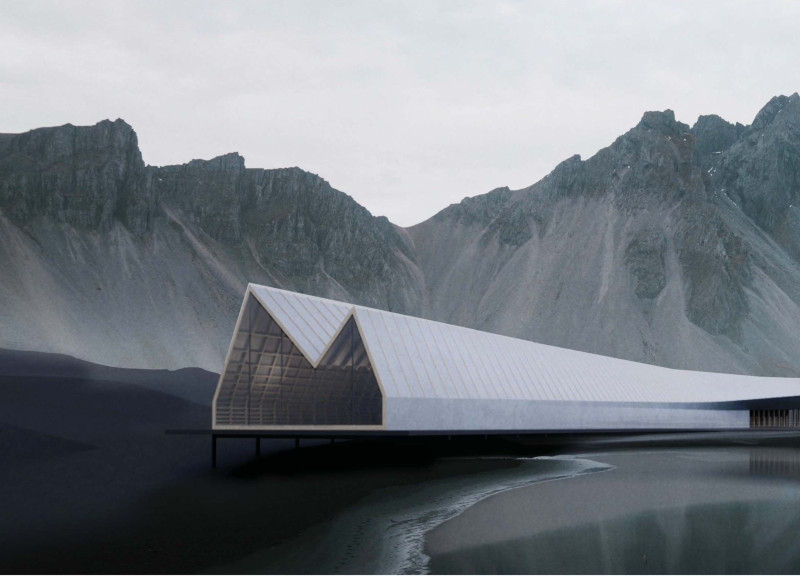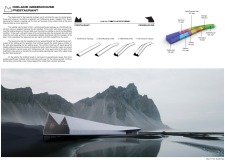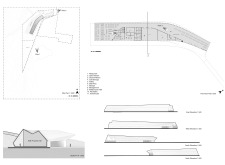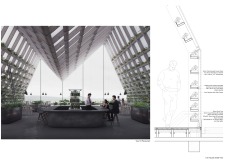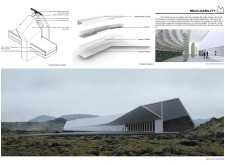5 key facts about this project
The primary function of the Iceland Greenhouse Restaurant is to provide a unique dining venue that sources its produce from an on-site greenhouse. This dual-purpose design not only enhances the culinary experience for visitors but also advances agricultural practices by making local sourcing a practical reality. The architectural approach emphasizes transparency, eco-friendliness, and community integration, reflecting broader trends in sustainable architecture.
One of the most notable features of the building is its linear configuration, which is specifically oriented to take full advantage of natural light. The southern exposure allows ample sunlight to penetrate the space, significantly benefiting both the greenhouse and the dining areas. This careful orientation also provides diners with unobstructed views of the surrounding landscape, creating a seamless connection between interior and exterior spaces.
The materiality of the project plays a crucial role in reinforcing its design philosophy. Key materials include polycarbonate panels, which are used extensively in the greenhouse sections to encourage sunlight while minimizing thermal loss. Cross-laminated timber serves as the structural framework, promoting sustainability through the use of responsibly sourced wood. This choice of materials not only enhances the aesthetic quality of the building but also underscores a commitment to environmentally-friendly construction practices.
Inside, the restaurant features high ceilings with open rafters and expansive windows that foster a sense of openness. The interior space is carefully organized to facilitate a smooth flow for visitors while providing areas for both dining and cultivation. Planters incorporated into the design create an inviting atmosphere that blurs the boundaries between the indoor experience and the natural environment outside. This connection to nature is further reinforced through the visual appeal of indoor greenery.
Unique design approaches are evident throughout the project. The concept of merging a greenhouse with fine dining is particularly innovative, transforming traditional perceptions of both architectural typologies. By allowing diners to engage with the process of food cultivation, the project educates visitors about sustainable practices while enhancing their overall dining experience. This integration of agricultural ideas into restaurant design is a compelling reflection of a growing trend toward sustainability in architecture.
Another notable aspect is the building's responsiveness to Iceland’s varied climatic conditions. The strategic use of thermal insulation materials and the architectural form itself contribute to the building’s energy efficiency and durability. This pragmatic approach illustrates how architecture can be designed to withstand the specific challenges posed by a particular geographic context.
The Iceland Greenhouse Restaurant ultimately serves as a model for future architectural projects that seek to harmonize functionality with sustainable practices. By embodying these principles, the project not only fulfills its immediate purpose but also positions itself as an engaging landmark within Iceland's striking environment. For those interested in exploring further dimensions of this project, including architectural plans, sections, and detailed design ideas, reviewing its architectural presentation will provide deeper insights into its innovative approach and thoughtful execution.


